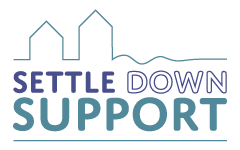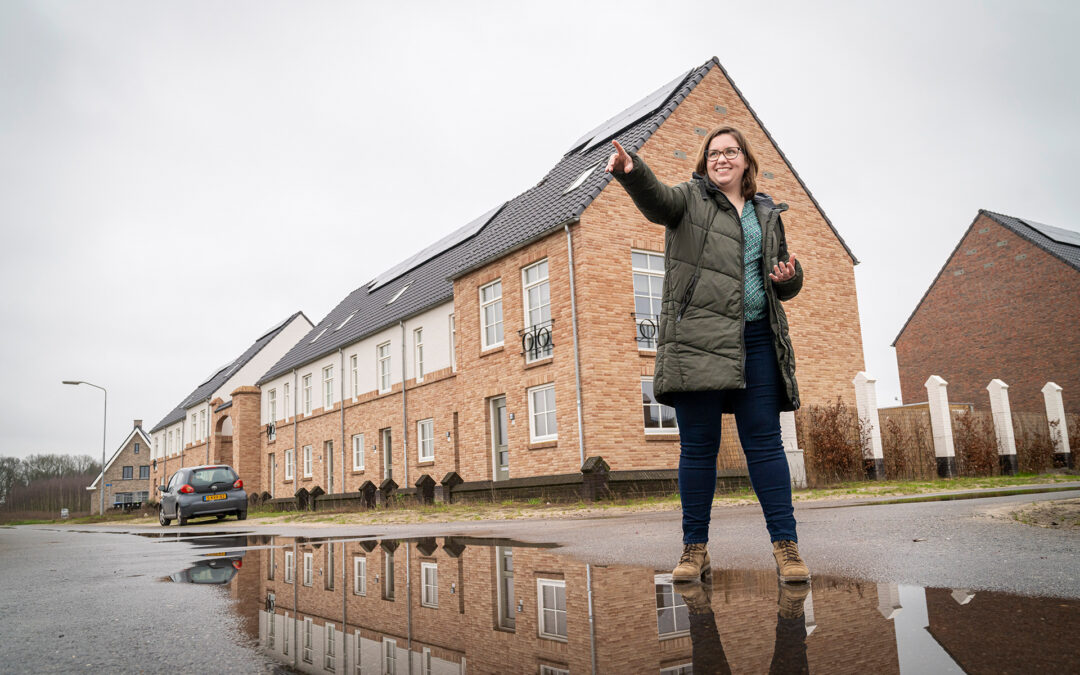Some fun facts about row houses
– In the Netherlands, there are around 3.4 million row houses. That’s 42% of the total amount of houses. That’s more than any other country in the world (1).
– Most row houses are built in the 1960s-1980s (1).
– One of the oldest known terraced houses are built in 1395 in Alkmaar. Typical built in a square, with a shared garden in the middle (2).
– Cheapest house in a row in March 2023 is a house in Enschede with a price of €95.000 for 85m2 and a large garden.
– The most expensive house in a row you will find in Amsterdam. Price? More than 5 million. This may not surprise you.
Advantages of living in row houses
- You save energy, by sharing some walls with the neighbours.
- Affordable way of housing.
- Stable in value.
- Living together with others, but still separate.
- You will have a garden.
Downsides
- You can hear the neighbours, especially when the house is build before the 1990s.
- Privacy. In the summer, it’s normal that you can hear your neighbours conversations.
History
Greeks and Romans
The oldest known row houses were built in Egypt, as shelters for the slaves who built the pyramids. Also in Pompeii, the famous Greek city, these houses are found. (2)
The first terraced houses in the Netherlands
In the Netherlands, the first terraced houses were built as small houses for widows and poor people. From the 1850s onwards, more houses were built as accommodation for their workers. As the industrialization of the Netherlands took place.
Typical building styles in the Netherlands
1930s
The houses from the 1930′ are famous for their stained-glass windows, the nice ornaments and the terrazzo floors. Art nouveau. Quality of the houses was more important than the quantity.
1950-1975
After the second world war, everything is scars. And, the Netherlands was in need of many houses. In this period, 1.5 million houses are built. Mostly project build houses. To built fast, the same method and design is used for many projects. The quality is stable. Many houses do have large windows at the front and back of the house, so sun can enter very easily.
Insulation was not applied. And these houses need a lot of maintenance.
Are you a house owner, and thinking about saving energy? Ready to invest your money wisely to improve your energy label? Book your introductory meeting by clicking this link, we will give you some tips and tricks to get started.
Tip:
Are you considering buying a house built before 1975? 1 million houses in the Netherlands have problems with the foundation and this can be very costly to solve. So, always ask for the condition of the foundation and ask for a technical inspection. This is especially important in the western and northern part of the Netherlands.
1970s and 1980s
Slowly, the quality of houses was getting more important than quality. Insulating measures were introduced, and doesn’t have so much glass. These kinds of houses are mostly easier to maintain than the 1950-1975. You can recognize the neighbourhoods on the curved streets.
1990s onwards
In 1990 rules and regulations (bouwbesluit) from the government did change the way of building. Quality, measurements and other important things were listed. This resulted in good quality houses with good to excellent insulation. And, there is a lot of variety in architecture,
Advice for row house owners
Keep the relation with your neighbours up. A good neighbour is better than a friend far away, says a Dutch proverb. Especially, when you are thinking of renovating your house.
Maintenance is important for the value of your house. A good maintained house is easier to sell, and will save you money later on. Especially, with the Dutch weather. Download the maintenance checklist for free here, to know what to do when.
Conclusion
It’s not a shame to live in a row house in the Netherlands. They are well-build houses, with value for their money. Normally, a garden is included, so you can sit outside in the summer.
Sources
1. nos.nl Meest voorkomende huistypes
2. Het rijtjeshuis, Bernard Hulsman en Luuk Kramer, 2013, Nw A’dam.




Trackbacks/Pingbacks